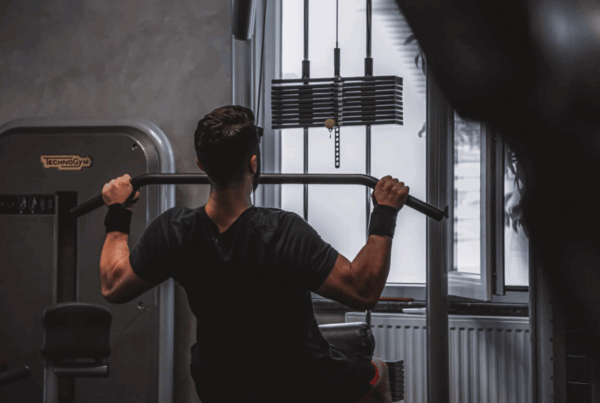Getting back to baseline after a knee replacement is one thing, but what if your baseline includes 14-hour shifts, unpredictable terrain, stair climbing, kneeling in tight spaces, and lifting equipment on a moving vessel? For many of the clients we work with, returning to “normal” isn’t just about weekend gardening or 20-minute walks. It’s about reclaiming a physically demanding role, safely and sustainably.
That was the case for Cameron*
In his 50s, with bilateral knee osteoarthritis and a recent total knee replacement, Cameron had spent decades working in a high-demand marine role. He loved his job and wasn’t afraid of hard work, but recovery had been slow, and he was at a crossroads: opt for a second knee replacement and brace for another long recovery, or double down on rehab and test whether his current momentum could carry him forward.
Since his right knee replacement, he’d completed over 30 physio sessions, was attending the gym, and making measurable gains. He wanted to return to work, but functionally, he wasn’t there yet and he lacked confidence and clarity around what he could and couldn’t do. Crouching, kneeling, uneven terrain… These were still off the table. Standing or walking for more than two hours brought on significant swelling and pain. Lifting was limited to 20kg and fatigue came quickly. All things that were key in his high demand role. That’s where we came in.
Understanding the Demands and the Gaps
From the outset, we knew Cameron’s return-to-work goal wasn’t just about a basic level of function, it was about meeting the specific, high-level requirements of a marine role. We conducted a full functional capacity evaluation aligned with his occupational demands and used these findings to shape a four-session targeted intervention.
Cameron’s program was designed with no “fluff”, to focus on the things that mattered: durability, load tolerance, proprioception, and real-world mobility. While physio had taken him far, it was our job to help him translate those gains into work-ready performance.
Here’s what that looked like:
- Targeted strength and control: We used exercises to improve hip and knee stability, with a focus on reducing compensatory movement and improving load-sharing between limbs.
- Work-relevant conditioning: From stairs to lunges to uneven surfaces, we progressively introduced controlled simulations of work tasks, building his tolerance for dynamic environments.
- Progressive overload with feedback: We avoided pushing too far, too fast, especially given his left knee was still at risk. We used video feedback and pacing strategies to build his movement confidence.
- Self-management planning: From day one, the goal was independence. We equipped Cameron with strategies to monitor swelling, manage fatigue, and adjust workloads between shifts.
This wasn’t about “more exercise.” It was about the right movements, in the right order, with the right context.
From Progress to Purpose
As the program progressed, an employment opportunity presented itself, one that offered continuity within the marine industry and a chance for Cameron to return to meaningful work. This time, though, he felt ready. Equipped with objective data, improved strength and mobility, and a clearer understanding of his physical capacity, Cameron had the confidence to say yes.
His progress wasn’t just subjective—it was measurable.
Knee Osteoarthritis Outcome Score (KOOS)
(0% = severe disability | 100% = full function)
- Symptoms & stiffness: 50% → 66%
- Pain: 56% → 72%
- Function in daily life: 66% → 89%
- Quality of life: 38% → 75%
RAND SF-36 Composite Score
- 48.8 → 62.8
In-Clinic Physical Testing
- Squat depth: 83° → 97°
- Right knee flexion: 81° → 103°
- Lunge depth: improved to ground-level
- Gait: unrestricted
- Load tolerance: no major limitations
Final Thoughts
In our last blog, we explored how fear and lack of confidence in movement (kinesiophobia) can hold clients back even after physical healing is complete. Cameron’s story is a perfect complement. His case reminds us that moving forward with confidence isn’t always about overcoming fear, it’s often about having a plan, a process, and a path forward. This is where Exercise Physiology shines.
When the injury has “healed,” but the client still isn’t work-ready, we bridge the gap between function and real-world job demands. We identify what’s missing, target it with precision, and ensure the individual can step forward, not just symptom-free, but equipped and confident.
*Name changed for privacy.
Author: Tessa Nielsen
#exercisephysiology #exerciserehab #rehabilitation #lifeinsurance #incomeprotection #ctp #workcover #mobile #mobileexercisephysiology #fatigue #mentalhealth #cancer #musculoskeletal #injury #pain #physio #physiotherapy #Sydney #Brisbane #Melbourne #Adelaide #Auckland #Waikato #BayofPlenty #Wellington #Otago #Christchurch



